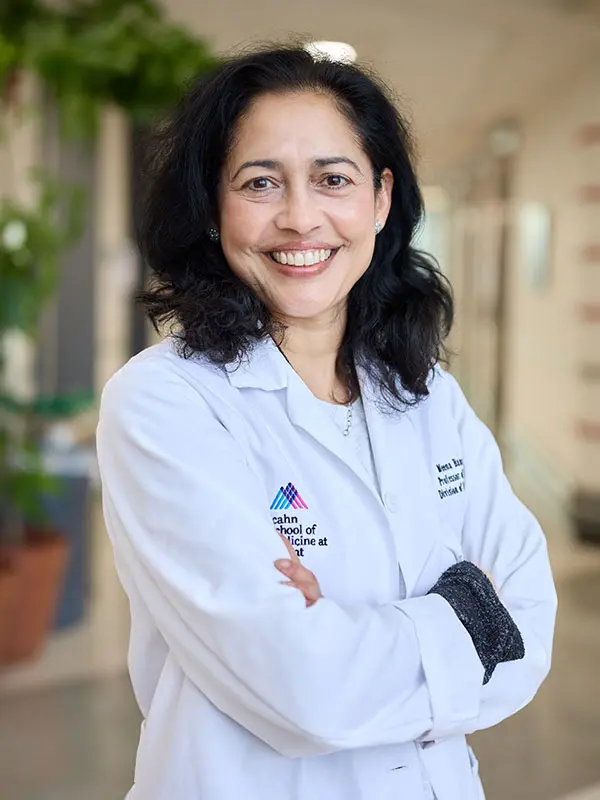One consequence of the obesity epidemic in the United States is that about one-third of all individuals, adults as well as children, have excess fat inside their liver. The majority have a less severe condition known as nonalcoholic fatty liver disease (NAFLD), which may just require monitoring and lifestyle changes. About 20 percent, however, have or are developing non-alcoholic steatohepatitis (NASH), a disease that rarely has symptoms but is characterized by inflammation and progressive scarring that can lead to cirrhosis, liver failure, and/or liver cancer.
Against that backdrop, the Mount Sinai Division of Liver Diseases has built on its nationally recognized expertise in fibrosis and fibrotic pathways to create the NASH Center of Excellence, concentrating under one umbrella a rich diversity of clinical and research programs spanning multiple medical disciplines. “Since 90 percent of people are unaware they even have fatty liver, there’s a huge population that could benefit from a comprehensive center that’s able to accurately screen, treat, and monitor their condition,” says Scott Friedman, MD, Professor of Medicine, and Pharmacological Sciences, Chief of the Division of Liver Diseases, and Dean for Therapeutic Discovery at the Icahn School of Medicine at Mount Sinai. “We’re focusing on all individuals with fatty liver to determine which are at greatest risk of progressing to NASH, then intervening as early as possible.”
There is no Food and Drug Administration-approved drug to treat NASH, though Mount Sinai researchers have completed 10 clinical trials and have six more underway in efforts to fill the void. “The biggest predictor for poor outcomes in NASH is fibrosis, and what distinguishes us is that we have expertise in fibrosis with the ability to explore molecular, cellular, and immunological pathways of the disease in a way that other NASH programs can’t,” says Meena Bansal, MD, Professor of Medicine (Liver Diseases) at Icahn Mount Sinai and Director of the NASH Center of Excellence.

Meena Bansal, MD, and Scott Friedman, MD
In addition to innovative translational studies, the Center is establishing a NASH Registry of patients at various stages of the disease, linked to robust clinical informatics, serum, plasma, urine, radiographic, and genomics information through collaboration with the Mount Sinai BioMe® BioBank. This repository, explains Dr. Bansal, will provide support to investigator-led studies, allowing consenting patients to be tracked longitudinally to determine factors associated with higher likelihood of progression from NAFLD to NASH.
“What distinguishes us is that we have expertise in fibrosis with the ability to explore molecular, cellular, and immunological pathways of the disease in a way that other NASH programs can’t.”
- Meena B. Bansal, MD
Activity has been no less intense on the clinical front. Because NASH is a systemic disease affecting multiple organs, the new Center of Excellence plans to establish clinics that give patients convenient access to experts in cardiology, endocrinology, nephrology, nutrition, hepatology, and obesity management. Those resources also include Mount Sinai’s Diabetes Center, experienced weight loss and bariatric teams, and, for the most severe cases, the Recanati/Miller Transplantation Institute for liver transplantation.
Diagnosing liver disease is the critical first step to risk stratification and treatment. In addition to routine blood tests and serum markers that often give an initial indication of fibrosis, the Center’s screening experts use MRI, ultrasound, and fibroscans to help determine the degree of fibrosis. “Fibroscans send a pressure wave through the liver that can measure stiffness and the amount of fat in the liver,” notes Dr. Bansal. “If the liver is soft, reflecting a lack of fibrosis and inflammation, the patient can be managed by lifestyle modification and followed by their primary care doctor. For those with evidence of significant fibrosis, they are best managed by a multidisciplinary approach through our Center that includes not only lifestyle modifications and rigorous control of metabolic stressors like diabetes and high cholesterol, but linkage to novel treatments through numerous clinical trials.”
“Most doctors are uncertain how to proceed with a patient suspected of having fatty liver disease,” says Dr. Friedman. “We’re prepared to be a valuable resource to them, and the fact we have not just the clinical tools but the science and drug development under the same virtual roof gives us an advantage that no other NASH program in the country can provide.”
To make an appointment to be evaluated in the NASH Center of Excellence, please call 212-241-7270.
Featured

Meena Bansal, MD
Professor of Medicine (Liver Diseases); System Chief, Division of Liver Diseases
